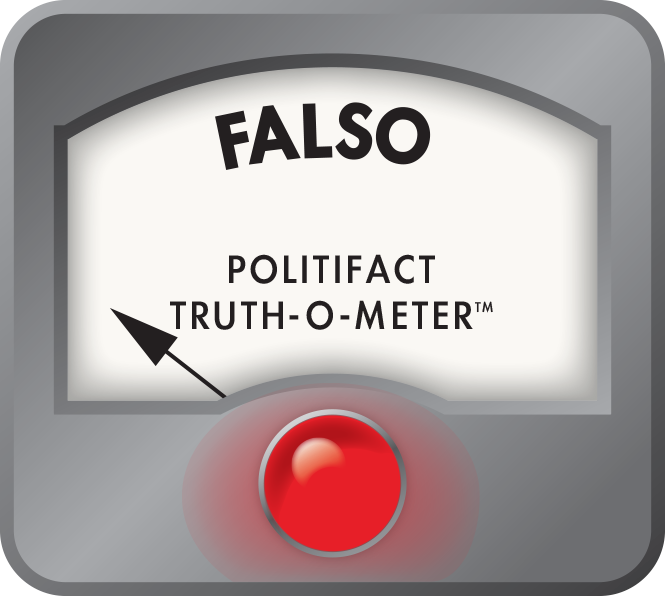Stand up for the facts!
Our only agenda is to publish the truth so you can be an informed participant in democracy.
We need your help.
I would like to contribute
Rep. Hartzler ignores critical facts about workforce statistics
Following the State of the Union and President Barack Obama’s claims of job creation, one member of Missouri’s congressional delegation said things aren’t so promising.
U.S. Rep. Vicky Hartzler, R-Columbia, said, "We have less Americans working now than back in the ‘70s, so we do need to still address that and get our economy going."
We reached out to Hartzler’s office to get a better idea of what she meant. Communications Director Kyle Buckles said the congresswoman was referring to the employment-population ratio from 1978 and 1979.
We looked into these numbers, as well as some other measures to gauge the portion of the population that is working.
Employment-Population Ratio
Sign up for PolitiFact texts
The Bureau of Labor Statistics defines the employment-population ratio as the proportion of civilian noninstitutionalized population aged 16 years and over that is employed.
This chart shows the ratio throughout the 1970s.
The data show that in only one year, 1979, the employment-population ratio was higher than it was in 2015. In one year, 1978, it was the same as in 2015. In every other year, the ratio was lower.
Labor Force Participation
Another frequently cited indicator used to compare employment numbers is the labor force participation rate. This is a little different from the employment-population ratio because it compares how many people are in the labor market — whether they have a job or not — to the total number of people who could be working.
One tricky issue with these numbers is how the aging population has affected the labor force between the 1970s and 2015.
During testimony before a Congressional committee, Elisabeth Jacobs, a senior director at the Washington Center for Equitable Growth, said the clearest cause for a declining labor force participation rate is the aging population.
"The Baby Boom generation, born between 1946 and 1964, is a large cohort of workers whose retirement age coincides with decline in labor force participation that began in 2000. As these workers retired, they left the labor force and in turn pushed down the total labor force participation rate."
If we use the two years Hartzler’s staff said she was referencing, 1978 and 1979, we find the labor force participation rates were 63.2 percent and 63.7 percent respectively. Both of those numbers are greater than 2015’s rate of 62.88 percent.
Featured Fact-check
However, we again had to wonder about the first eight years of the decade. The rate in 1970 was 60.4 percent and it grew steadily to 62.3 percent in 1977, but it didn’t rise above 2015’s rate in that time.
Number of Workers
According to the U.S. Census Bureau, the U.S. population grew from 202 million in 1970 to 308 million in 2010. While the population grew, did the number of Americans working fall to 1970 levels?
Bureau of Labor Statistics reports show that by the end of the 1970s, there were nearly 105 million people in the workforce. In 2015, that number had reached more than 155 million. These data show a nearly 50 percent increase in the absolute number of Americans working in 2015 compared to the late 1970s.
Our Ruling
Hartzler said, "We have less Americans working now than in the ‘70s."
The statistics Hartzler’s staff said she cited show the employment-population ratio and labor force participation rate was indeed higher in 1979 than in 2015. However, Hartzler was talking about the entire decade of the ‘70s. When we look at all the years, the claim doesn’t stack up. The first eight years of the decade, 1970 through 1977, have a lower employment-population ratio and a lower labor force participation rate than 2015.
Hartzler’s claim does contain an element of truth, but it ignores critical facts and statistics that would give it a different impression. We rate this statement Mostly False.
Our Sources
Bureau of Labor Statistics, "Labor force statistics from the Current Population Survey 1970-2015," accessed Feb. 11, 2016.
Bureau of Labor Statistics,"Employment status of the civilian noninstitutional population,"accessed Feb. 11, 2016.
U.S. Census Bureau, "U.S. Population in Millions: 1940-2050,"accessed Feb. 12, 2016.
Washington Center for Equitable Growth, "The Declining Labor Force Participation Rate: Causes, Consequences and the Path Forward." March 4, 2016.
Truth-O-Meter article, "Roger Williams falsely says 'fewest number of adults' working since Jimmy Carter’s presidency," PolitiFact, Jan. 22, 2016.
Browse the Truth-O-Meter
More by Conner Smith
Rep. Hartzler ignores critical facts about workforce statistics
Support independent fact-checking.
Become a member!
In a world of wild talk and fake news, help us stand up for the facts.




































